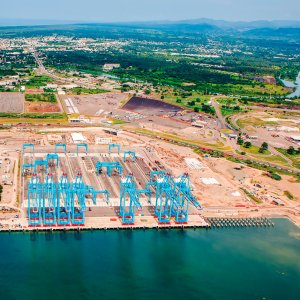Toluca's International Airport Faces Turbulence

STORY INLINE POST
With construction of the New Mexico City International Airport on the horizon, the nearby Toluca International Airport (AIT) faces turbulence as it gears up to attract more national airlines and passengers. OHL Toluca saw an abundance of business potential despite its core experience being in toll road infrastructure. “We may not be in control of the airport’s operations but we actively participate in daily discussions with the other two stakeholders and the AMAIT administration,” says Ochoa. “This public-private association has been highly successful even during the airport’s low seasons because each partner is fully aware of the needs of the other two and all parties work to achieve our common interests. OHL complements the administrator’s efforts in processes like financial analysis and the development of the commercial strategy. AIT’s performance has reached a high standard thanks to its three-party public-private stakeholder participation.”
Airlines tend to work with high volumes but low margins so economies of scale are one of the only ways to increase profits and efficiency. “The first step for us was to understand each airline’s business model, be it a legacy airline or a low-cost carrier,” Ochoa says. Most cities only have a single airport in proximity, while Toluca has to compete with the nearby Mexico City International Airport (AICM) and its capacity to transport almost 40 million passengers. It is a tough challenge to face. “Airlines may prefer AICM due to its high passenger volume, putting Toluca at a disadvantage.” AICM now operates at full capacity 18 hours a day, from 6am to 11:59pm, which represents over 380,000 commercial operations. To remain significant, Toluca must generate a series of processes such as incentive plans with airlines based on operating volume and route development. OHL works closely with airlines to address their growth strategies.
Toluca has four main commercial airlines in operation. The largest is Interjet, which transported 60 percent of the almost 800,000 passengers that used AIT in 2015. The second is Aeroméxico, which is working in the airport through its Aeroméxico Connect division. TAR is in third place and Volaris is the fourth key player in Toluca’s commercial offering. The airport also has a substantial number of private aviation operations that moved from AICM in 1994. Operadora de Aviación General (OAG), which is in charge of the hangars and fixed base operators, services these operations. OHL plays an important role as well in the airport. “We support them during takeoff, landing and other platform services. By number of operations, the airport is stronger on private aviation, which represents approximately 80,000 operations a year or 90 percent of operations volume,” says Ochoa. The private aviation segment is expected to grow about 3.5 percent on an annual basis.
The completion of the New Mexico City International Airport (NAICM) may pose an additional obstacle for Toluca. NAICM is estimated to start operations in 2020 and will have six runways with triple simultaneous operation and a capacity of 120 million passengers per year. “Following the construction of NAICM we project a drop in business,” Ochoa says. “We expect to continue growing steadily until NAICM is completed, after which we will begin to shrink as operations move back to Mexico City. However, by that time we expect to have developed a volume of operations that is large enough to be attractive on our own.” Luckily, NAICM will be geared toward international flights, a massive opportunity for Toluca to soak up a large chunk of the country’s national flights if it can prove itself to be an efficient partner for airlines.
AMAIT’s concession will last until 2055. The Mexico- Toluca highway expansion is scheduled to be finished in the middle of 2016. There is a new highway, Naucalpan- Toluca, which will increase traffic to Toluca from several areas that have high demand for air transportation and the construction of the Mexico-Toluca train could also benefit AIT. Turbulence may be ahead but there are good reasons to believe in a smooth landing.






















